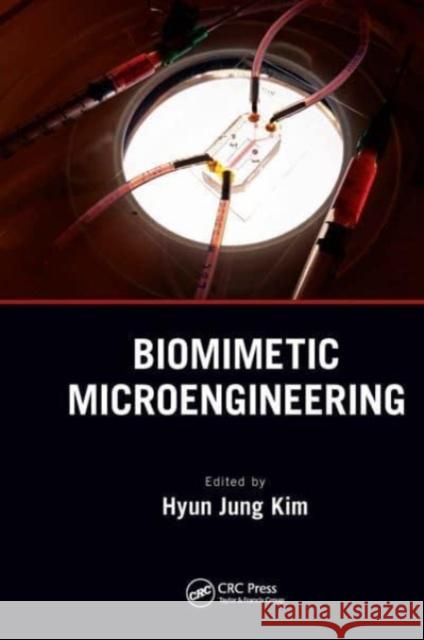Biomimetic Microengineering » książka
Biomimetic Microengineering
ISBN-13: 9781032652528 / Angielski / Miękka / 2023 / 396 str.
Biomimetic Microengineering
ISBN-13: 9781032652528 / Angielski / Miękka / 2023 / 396 str.
(netto: 228,94 VAT: 5%)
Najniższa cena z 30 dni: 226,63 zł
ok. 16-18 dni roboczych.
Darmowa dostawa!
This book will examine the relevant biological subjects involved in biomimetic microengineering as well as the design and implementation methods of such engineered microdevices. Physiological topics covered include regeneration of complex responses of our body on a cellular, tissue, organ, and inter-organ level. Technological concepts in cell and tissue engineering, stem cell biology, microbiology, biomechanics, materials science, micro- and nanotechnology, and synthetic biology are highlighted to increase understanding of the transdisciplinary methods used to create the more complex, robust biomimetic engineered models. The effectiveness of the new bioinspired microphysiological systems as replacements for existing in vitro or in vivo models is explained through sections that include the protocols to reconstitute three-dimensional (3D) structures, recapitulate physiological functions, and emulate the pathophysiology of human diseases. This book will also discuss how researchers can discover bridge technologies for disease modeling and personalized precision medicine.
Features
- Focuses on cutting edge technologies that enable manipulation of living systems in a spatiotemporal manner.
- Incorporates research on reverse engineering of comples microenvironmental factors in human diseases.
- Highlights technologies related to patient-specific personalized medicine and their potential uses.
- Written by chapter authors who are highly respected researchers in science and engineering.
- Includes extensive references at the end of each chapter to enhance further study.
Hyun Jung Kim is an Assistant Professor in the Department of Biomedical Engineering at The University of Texas at Austin. After receiving hois Ph.D. degree at Yonsei University in the Republic of Korea, he did extensive postdctoral research at both the University of Chicago and the Wyss Institute at Harvard University. These efforts resulted in cutting-edge breakthroughs in synthetic microbial community research and organomimetic human Gut-on-a-Chip microsystem. His research on Gut-on-a-Chip technology leads to the creation of a microfluidic device that mimics the physiology and pathology of the living human intestine. Since 2015, he has explored novel human host-microbiome ecosystems to discover the disease mechanism and new therapeutics in inflammatory bowel disease and colorectal cancers at UT Austin. In collaboration with clinicians, his lab is currently developing disease-oriented, patient-specific models for the advancement in pharmaceutical and clinical fields.
This book will examine the methods to reconstitute three-dimensional (3D) structure, recapitulate the human physiology as well as pathology during health and disease. A focus is on the regeneration of complex responses of our body in cells, tissues, organs, and inter-organ level interactions.











